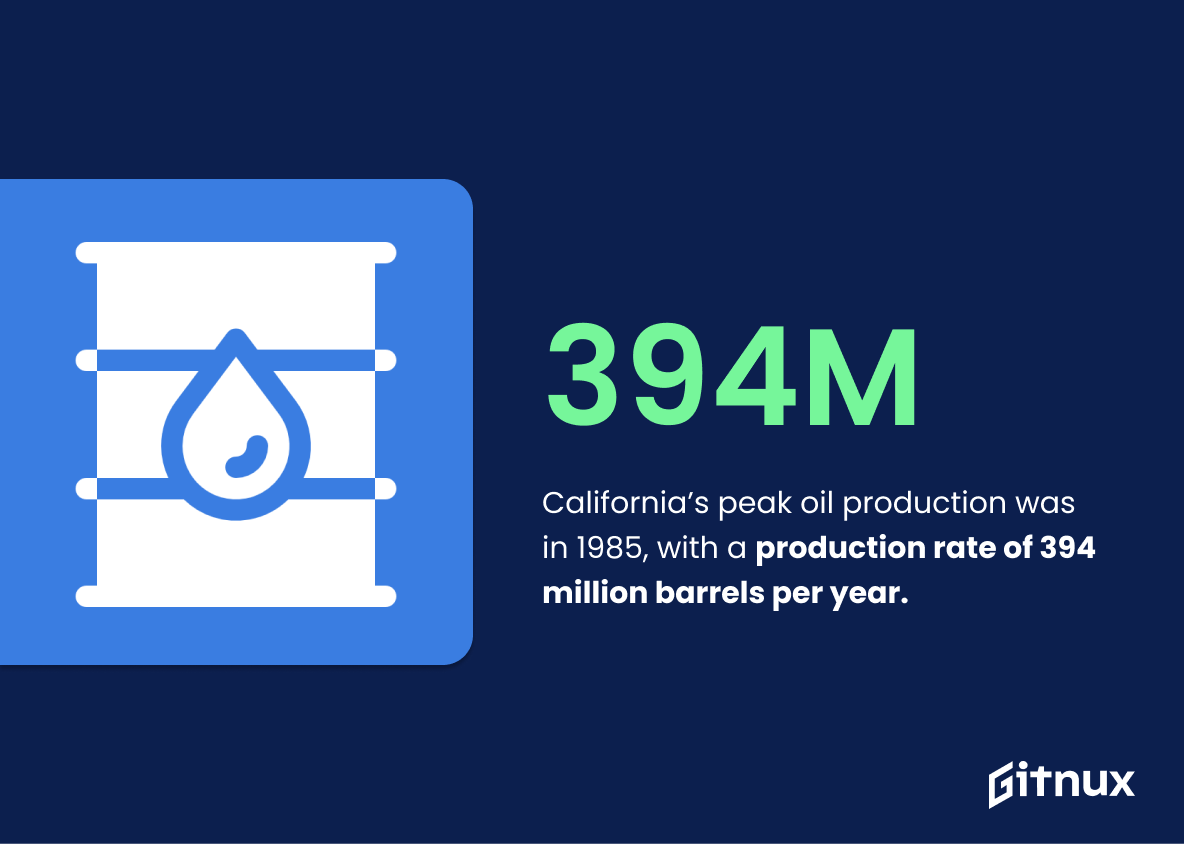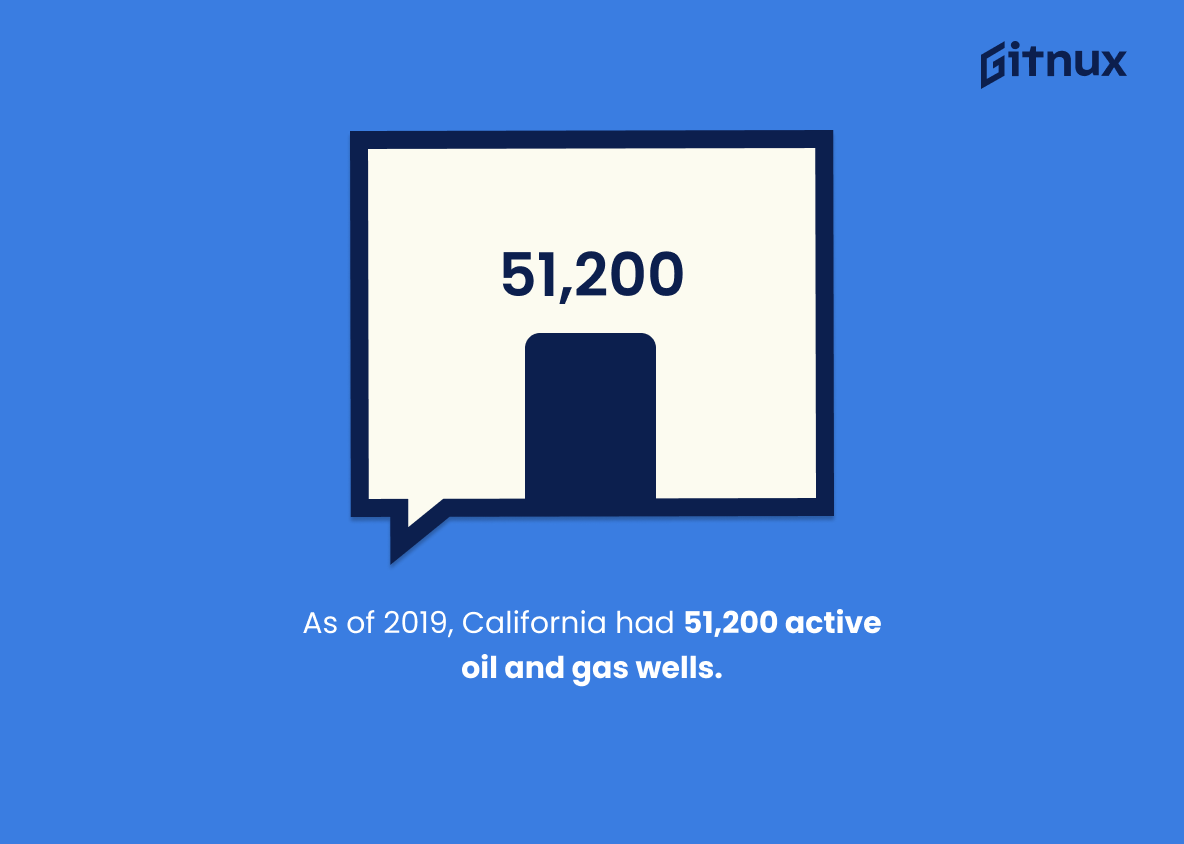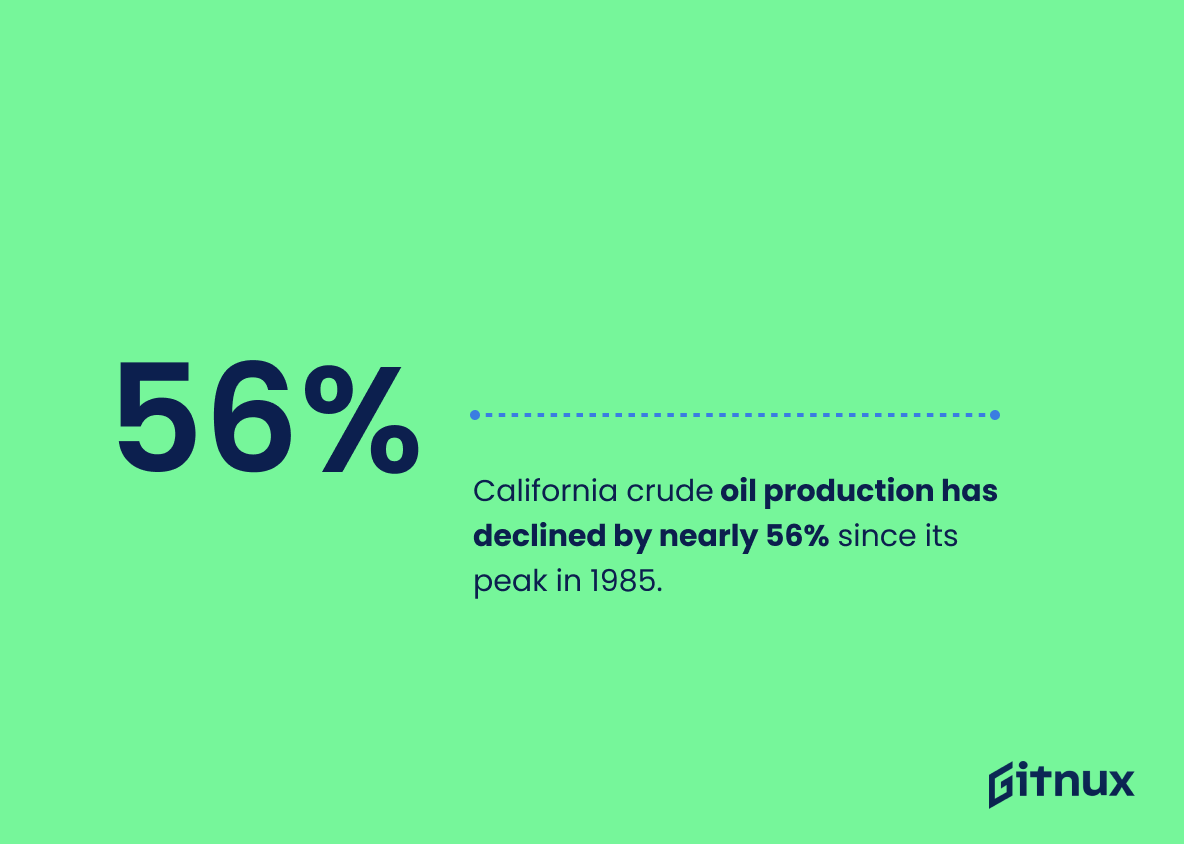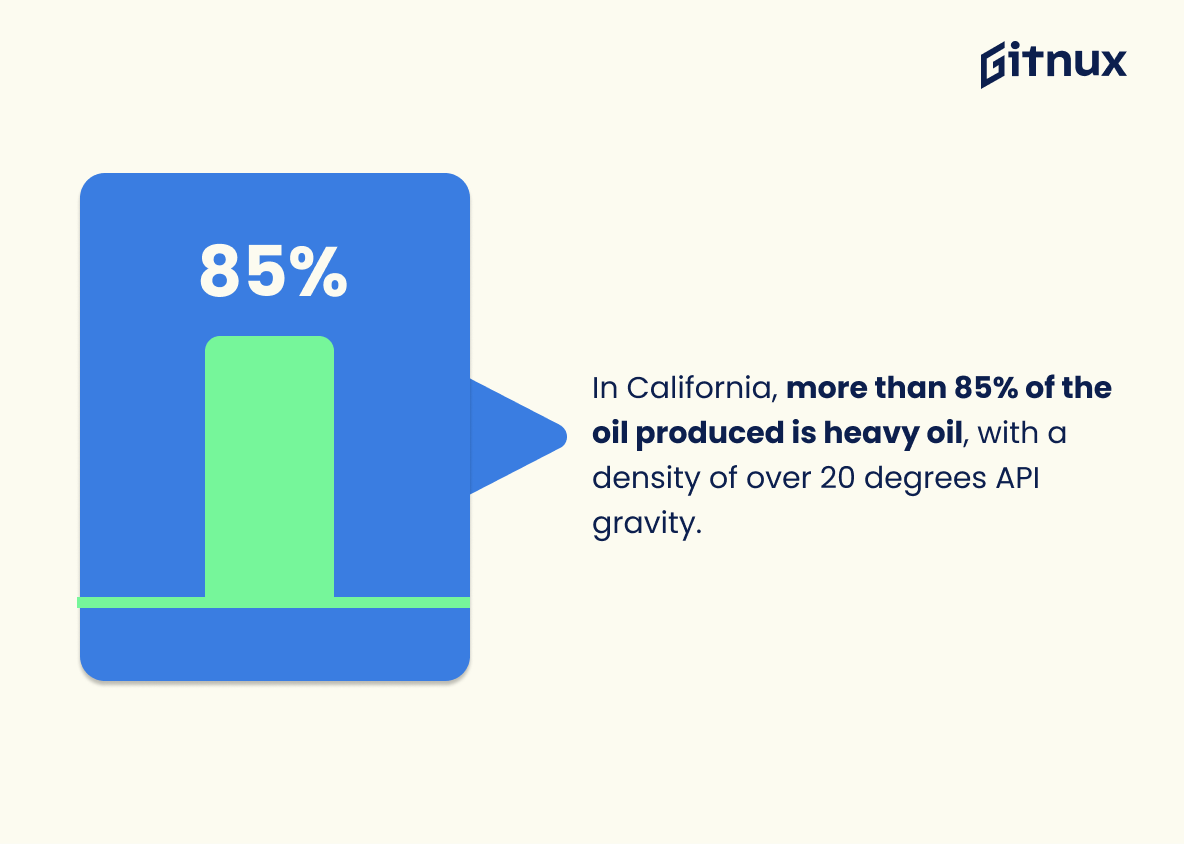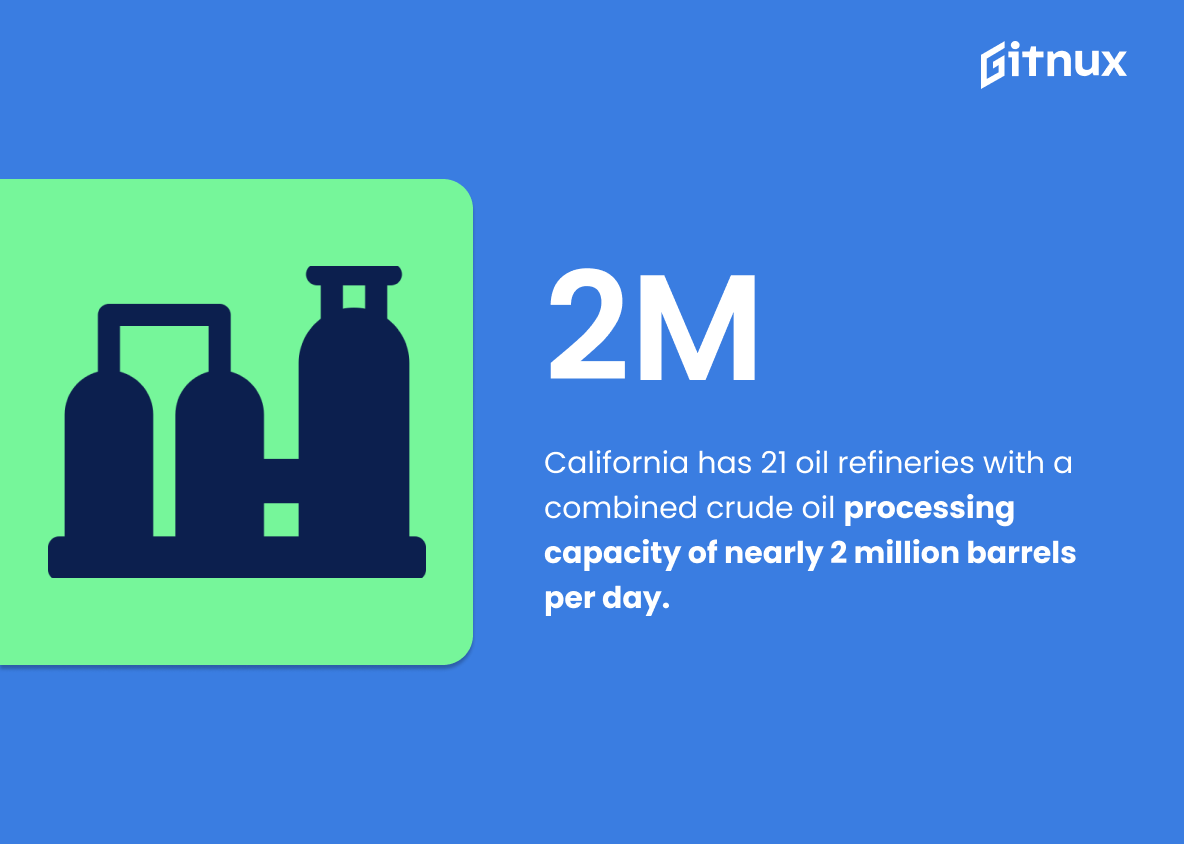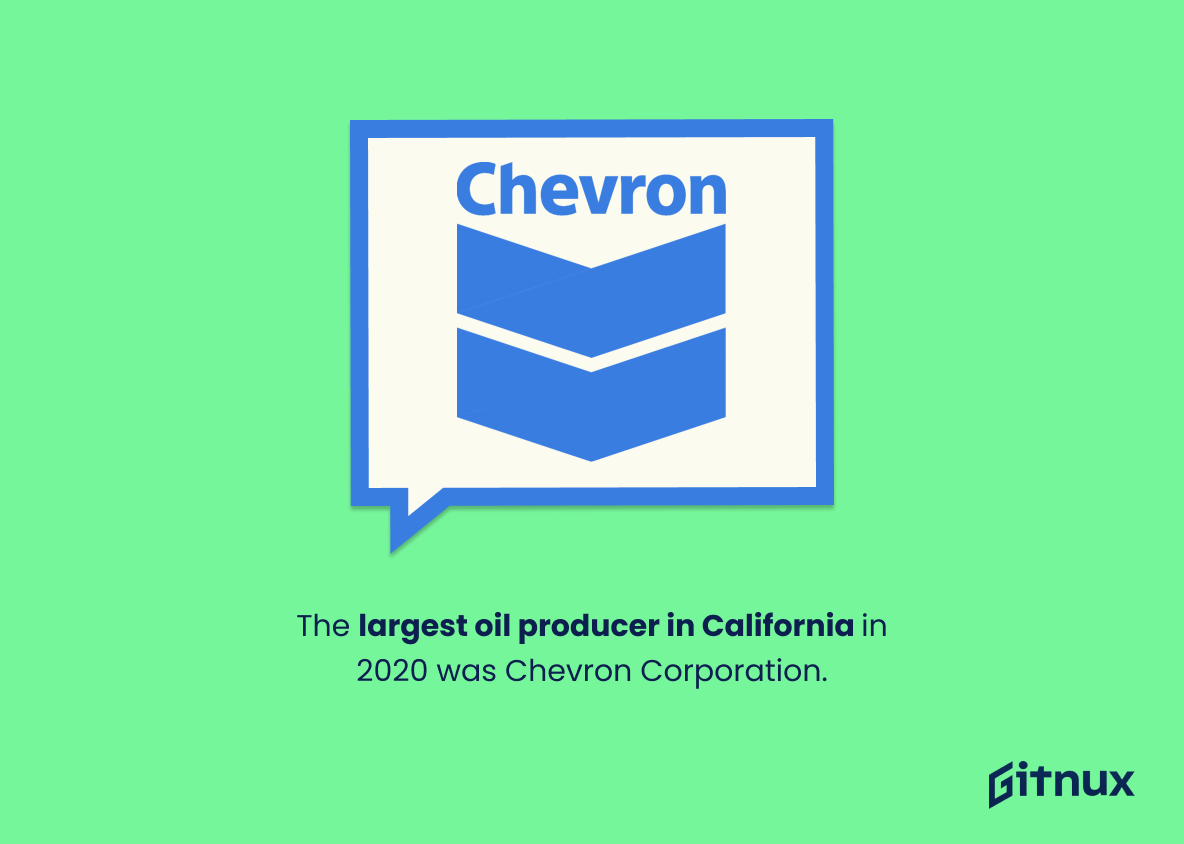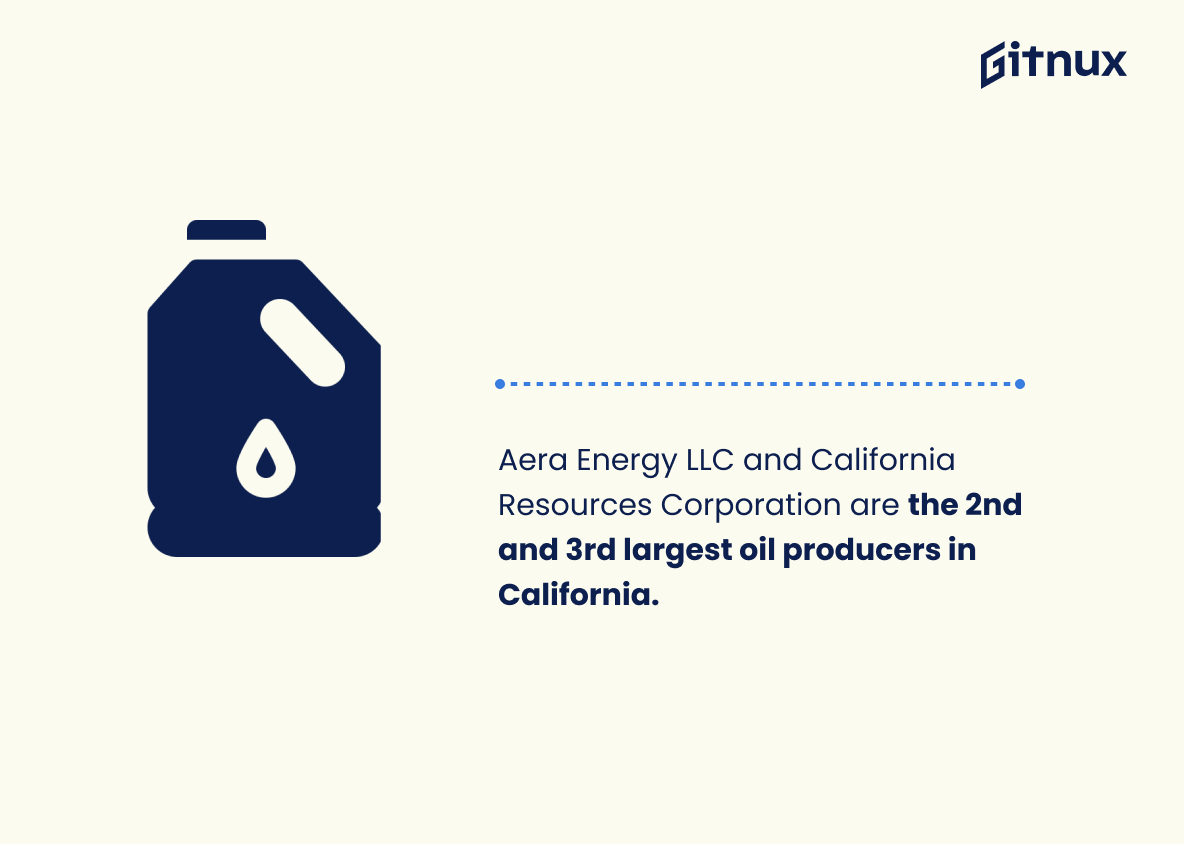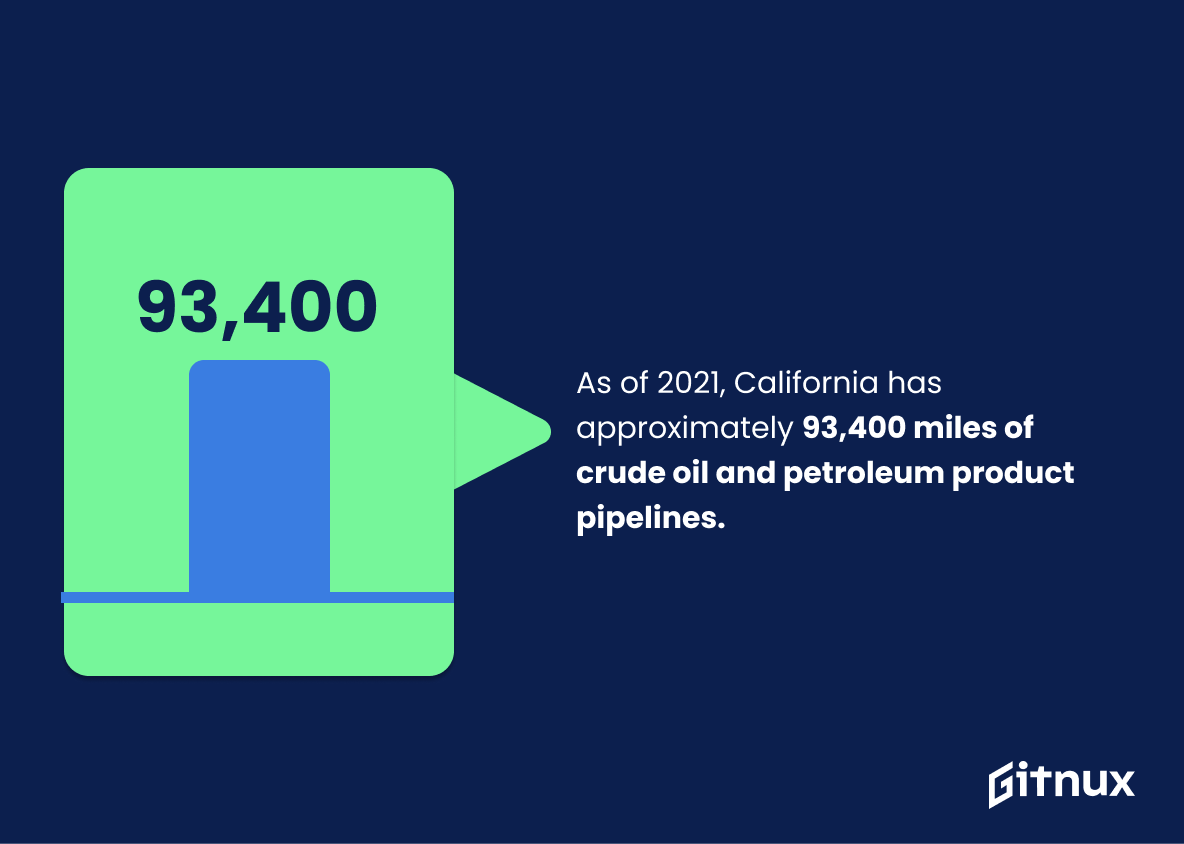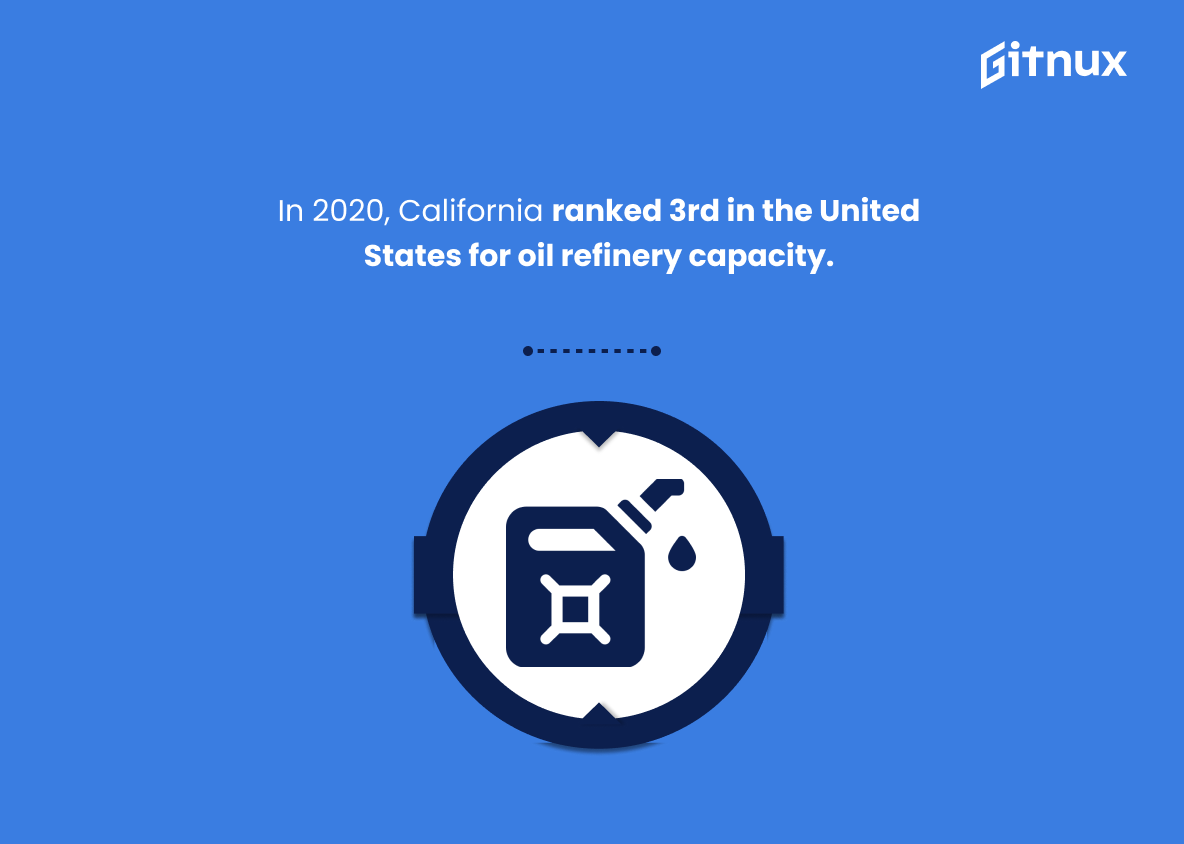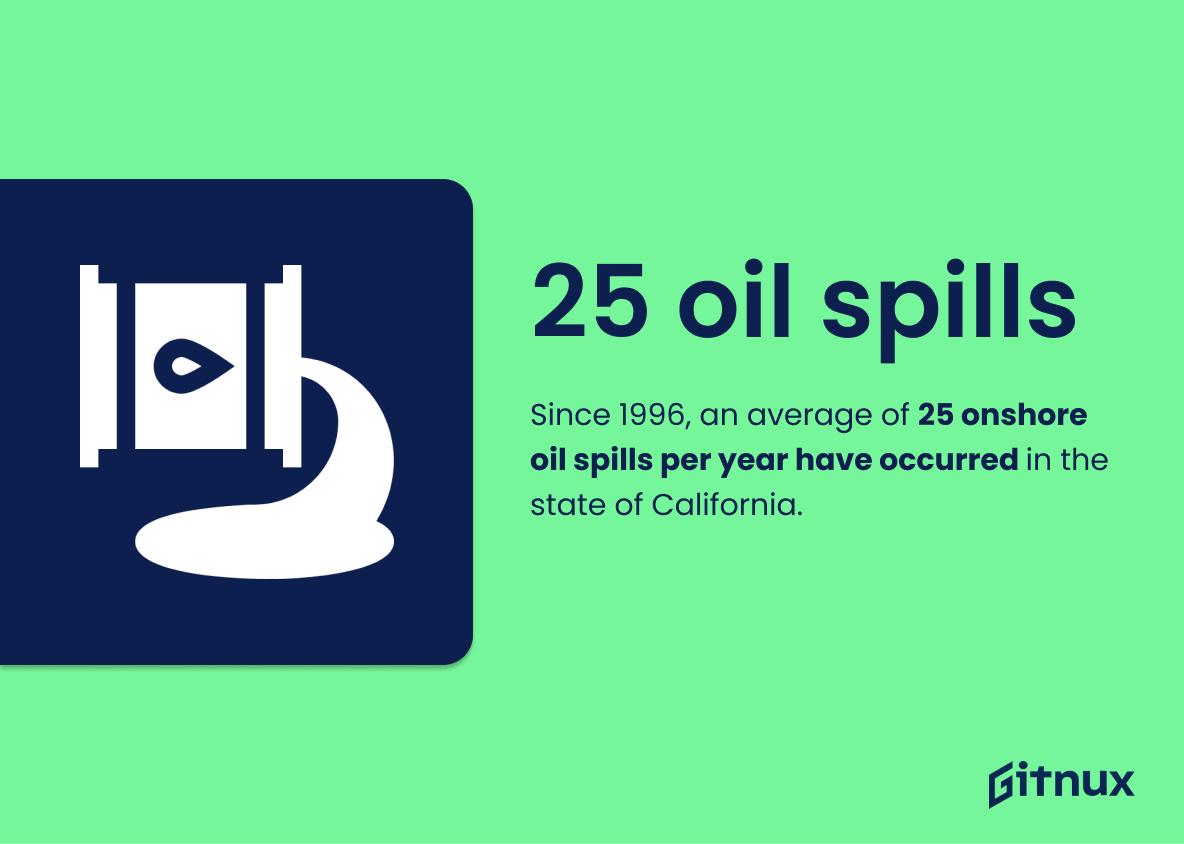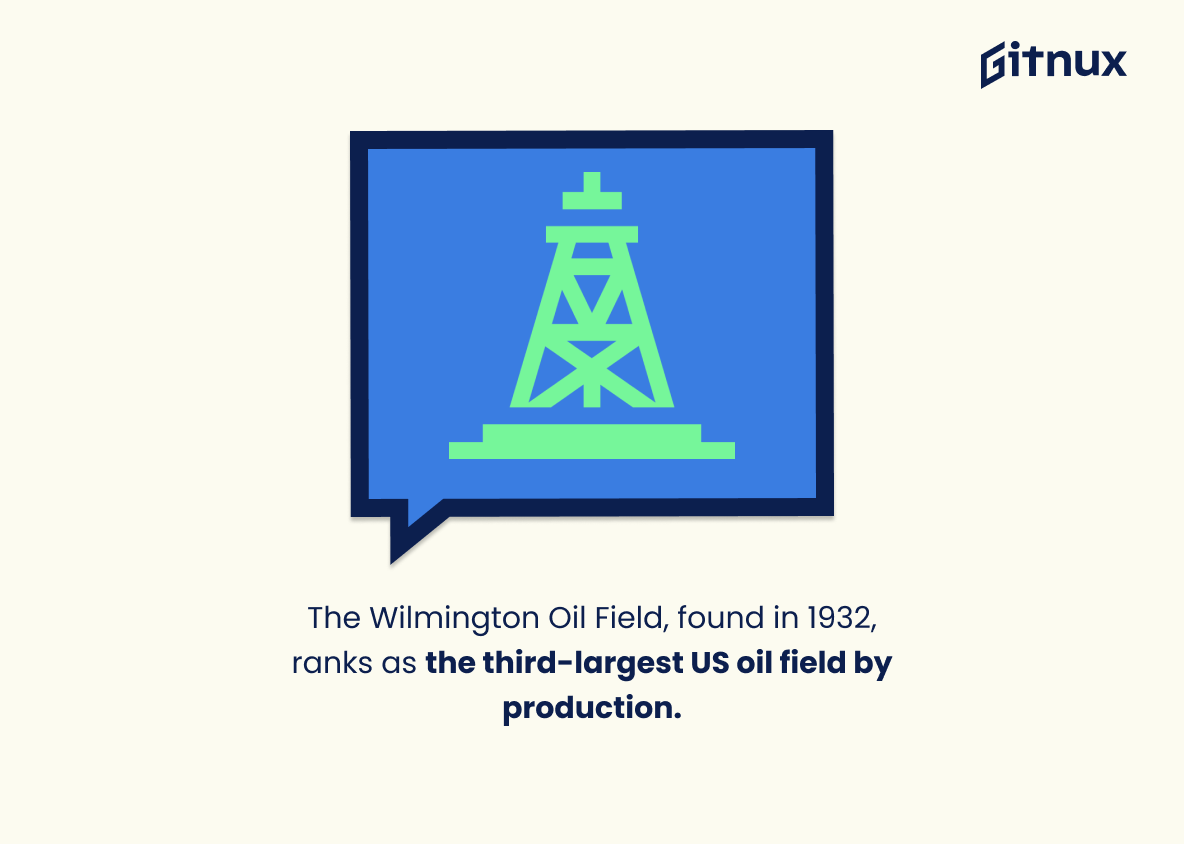California is a major player in the oil and gas industry, with an impressive history of production. According to data from the U.S. Energy Information Administration (EIA), California is currently the 7th largest oil-producing state in America, producing about 166,000 barrels per day as of 2020. This accounts for 4.8% of total U.S crude oil production that year – a significant contribution.
The peak rate of California’s oil production was back in 1985 when it reached 394 million barrels per year; however since then there has been a steady decline due to various factors such as increased regulations on drilling activities and environmental concerns over fracking operations within its borders – resulting in 56% less output than at its peak level today . Despite this decrease, Kern County still produces more than 70% of all Californian crude oils while Los Angeles and Ventura counties make up most remaining domestic supply with their combined contributions amounting to 80%.
In addition to these figures related directly to extraction efforts, other statistics provide insight into how much economic impact this sector has had on The Golden State: In 2017 alone it contributed $152 billion dollars towards local GDP growth while providing 152 thousand jobs across multiple industries including refining services which are supported by 21 refineries located throughout California boasting 2 million barrel processing capacity daily – making them 3rd highest ranked among US states for refinery capacities according to Ballotpedia’s report published last year . Furthermore , taxes generated from petroleum products sales have amounted up-to 6 point seven billion dollars annually since 1996 despite increasing safety measures implemented after 25 average spills reported each year during same period . Finally , Wilmington Oil Field discovered back 1932 remains one biggest sources supplying United States market being third largest field nationwide based on cumulative productions numbers released by EIA recently .
Overall , although current trends suggest further declines ahead regarding both quantity produced along with associated revenues ; It appears that even though not without challenges posed by changing environment conditions or stricter government policies imposed upon operators active within region ; Petroleum industry will remain important part contributing significantly towards overall economy well into foreseeable future here at home state known affectionately as “The Golden State”
California Oil Production Statistics Overview
California’s peak oil production was in 1985, with a production rate of 394 million barrels per year.
This statistic serves as a benchmark for California’s oil production, demonstrating the highest level of production the state has achieved in the past. It provides a point of comparison for current production levels, allowing readers to gauge the progress of the state’s oil industry over time.
As of 2019, California had 51,200 active oil and gas wells.
This statistic is a telling indication of the sheer magnitude of California’s oil and gas production. It paints a vivid picture of the state’s reliance on these resources and the sheer scale of the industry. It is an important piece of information to consider when discussing California’s oil production statistics.
California crude oil production has declined by nearly 56% since its peak in 1985.
This statistic is a stark reminder of the dramatic decline in California’s oil production over the past 35 years. It highlights the need for the state to take action to ensure that its oil production remains competitive in the global market. It also serves as a warning to other states that may be considering investing in oil production, as it demonstrates the potential risks associated with such an endeavor.
In California, more than 85% of the oil produced is heavy oil, with a density of over 20 degrees API gravity.
The fact that more than 85% of the oil produced in California is heavy oil is significant because it indicates that the state is producing a large amount of oil with a high density. This is important because heavy oil is more difficult to refine and process than lighter oil, meaning that California’s oil production requires more specialized equipment and expertise. This could have implications for the cost of oil production in the state, as well as the environmental impact of the industry.
More than 80% of California’s in-state oil production comes from three counties: Kern, Los Angeles, and Ventura.
This statistic is a telling indication of the concentration of California’s in-state oil production. It highlights the fact that the majority of the state’s oil production is concentrated in just three counties, demonstrating the need for a more balanced approach to oil production in the state.
California has 21 oil refineries with a combined crude oil processing capacity of nearly 2 million barrels per day.
This statistic is a testament to the sheer magnitude of California’s oil production capabilities. With a combined processing capacity of nearly 2 million barrels per day, it is clear that California is a major player in the oil industry. This statistic serves as a reminder of the importance of oil production in the state and the impact it has on the economy.
The largest oil producer in California in 2020 was Chevron Corporation.
This statistic is significant in the context of California Oil Production Statistics because it provides a clear indication of the leading player in the industry. Knowing who the largest producer is can help inform decisions about investments, production strategies, and other aspects of the industry. Additionally, it can provide insight into the overall state of the industry and how it is likely to evolve in the future.
Aera Energy LLC and California Resources Corporation are the 2nd and 3rd largest oil producers in California, respectively.
The fact that Aera Energy LLC and California Resources Corporation are the 2nd and 3rd largest oil producers in California, respectively, is indicative of the state’s importance in the oil production industry. It shows that California is a major player in the oil production market, and that these two companies are major contributors to the state’s success in this sector. This is an important statistic to consider when discussing California’s oil production statistics, as it provides insight into the state’s role in the industry.
As of 2021, California has approximately 93,400 miles of crude oil and petroleum product pipelines.
This statistic is a telling indicator of the sheer magnitude of California’s oil production industry. It speaks to the sheer scale of the infrastructure that has been built to support the state’s oil production, and the sheer amount of resources that have been invested in it. It is a testament to the importance of oil production in California, and the economic and environmental impact it has had on the state.
In 2020, California ranked 3rd in the United States for oil refinery capacity.
This statistic is a testament to California’s standing as a major player in the oil industry. It highlights the state’s capacity to refine oil, which is a key factor in the production of oil products. This statistic is indicative of California’s ability to produce oil on a large scale, making it an important contributor to the US oil industry.
Since 1996, an average of 25 onshore oil spills per year have occurred in the state of California.
This statistic serves as a stark reminder of the environmental risks associated with oil production in California. It highlights the need for increased safety measures and regulations to ensure that the state’s oil production does not come at the expense of its environment.
The Wilmington Oil Field in Southern California, discovered in 1932, is the third-largest oil field in the United States by cumulative production.
This statistic is a testament to the significance of California’s oil production. It highlights the fact that the Wilmington Oil Field is one of the most productive oil fields in the United States, and that California is a major player in the oil industry. This statistic is a reminder of the importance of California’s oil production and its impact on the nation’s economy.
Conclusion
California is a major player in the U.S. oil and gas industry, with an impressive production rate of 166,000 barrels per day and 51,200 active wells as of 2019. The state’s peak oil production was 394 million barrels per year in 1985; however since then it has declined by nearly 56%. Kern County accounts for over 70% of California’s current crude oil output while Chevron Corporation is its largest producer. In addition to this, the state also boasts 21 refineries with a combined capacity of 2 million barrels per day and 93,400 miles worth of pipelines transporting petroleum products across the region. Despite these successes though there are still risks associated with such activities – 25 onshore spills occur each year on average according to 2020 data from Energy Almanac – highlighting that safety must remain paramount when dealing with natural resources like those found within California’s borders
References
0. – https://www.eia.gov
1. – https://www.ballotpedia.org
2. – https://www.statista.com
3. – https://www.energy.ca.gov
